Castles Of Serbia
Bezeredj-Dunđerski Castle
Čelarevo
One of the castles that is inextricably linked with Serbian literature is the castle of the Dunđerski family in Čelarevo. However, when it was made, it was neither known by the richest family in Vojvodina name, nor was the village called that. At that time, it was Čib (Dunacséb), where Dunđerski founded the famous brewery. And before that, the castle was called Bezeredj, after the previous owner.
But this is not even the first castle to be situated in this place. The first castle was built by Lipót (Leopold) Márfi, and it was a smaller castle, built in the late 18th century. His castle was a ground floor building with a rectangular base, which had a yard porch supported by pillars with decorative capitals. Later, this castle was remodelled, which lost its authenticity, both in the interior and in the exterior. Let’s go a step further into the past: after the liberation from the Ottomans at the end of the 17th century, the Austrians annexed the area of Cseb, as the settlement was called, directly to Aerarium (Treasury), or registered it as the property of the court. Leopold Marfi was a respectable nobleman, lawyer and chief notary of the County of Bačka, and in 1751 he bought the area that belonged to the Court for almost a century. When he became the chief notary of Bačka again, in 1797 he built a small castle, which is often called “Old Castle”. The building has remained to this day, although it is in a dilapidated condition. Count Márfi was a cruel and harsh ruler, and his subjects emigrated in the winter of 1800/1801 in Nadalj, which they founded, in Šajkaška, leaving the property deserted. At that time, the inhabitants of Tscheb were Serbs, and almost all of them moved away, 56 families total, so Count Márfi was left without workforce, and without the possibility of field work to be done. Marfi then immigrated Catholics, mostly Germans and some Šokacs, from Bukin, Bač and Wolfingen (Karavukovo) to replace the Serbs, but the Catholics did not tolerate Márfi’s cruelty for long either. 12 of them conspired and killed the count on September 12th, 1812, upon his return from Pest, and the leader of the conspirators was a certain Josef Ferger. He was later, when the conspirators disclosed themselves, executed on the then fashionable guillotine, and the others were sentenced to life imprisonment. Count Márfi had no heir, and the estate was returned to the imperial office. The settlement was renamed Tscheb by the Germans.
But then the property was bought by Josef Polimberger, a landowner from Stoni Beograd (Székesfehérvár) in 1819, and his daughter Caroline Charlotte married Nikola Bezeredj. Bezeredj decided that his small castle was too small and built a large castle in a spacious park built on the principle of English gardens. This happened between 1834 and 1837 according to the design of a Viennese architect whose name has not been preserved. But it is known that two local Germans, Amann and Hoffmann, managed the construction where the workers were local Germans. The information on the year of construction is written on the back facade. As it was already the time of classicism, the castle took on the characteristics of that style, and represented an exemplary wealthy residence. Nikola and Carolina Charlotte were constantly present in the castle, and it progressed. They were also completely different in character, and known for their charities. In their time, a Catholic church and an expanded park were built, with their money.
Nikola Bezeredj died in 1865 and had a son Bela and a daughter Hermina, who could not manage this property and another one in what was then Upper Hungary, that is, Slovakia. After that, Lazar Dunđerski bought the castle from Bezeredj, and poetry got involved in the story. Dunđerski came into possession of the castle in 1882, and this was only one of his castles – he had them in Kulpin, Krivaja near Stari Bečej and Hajdučica. But, this castle was close to his beer factory and near Novi Sad, so he often stayed here with his family and received distinguished guests with his beautiful wife Sofia. Jovan Jovanović Zmaj, Laza Kostić, Paja Jovanović, Đorđe Popović Daničar, Jovan Bošković, Dezső Kosztolányi, Sándor Bródy, Sándor Hunyady, Uroš Predić, Stevan Todorović and others often came here. Jovanović, Todorović and Predić painted portraits of family members, and one love that was born in the castle is especially interesting, and that is that of the famous poet Laza Kostić and the beautiful and young Lenka Dunđerski, the favourite of the owner and landowner Lazar Dunđerski. Laza Kostić will meet a woman in this castle who was his great admirer and equal in spirit, but social differences between them prevented this connection from being realized, as well as the weak self-confidence of thewell-aged Kostić, who thought he was too old and unworthy of beautiful Lenka. Nevertheless, Laza wrote one of the most beautiful love poems in the Serbian language to Lenka, the inhabitant of the castle, and that poem is called Santa Maria della Salute.
After the creation of the Kingdom of Serbs, Croats and Slovenes, King Aleksandar Karađorđević also stayed here for a while. However, in 1946, the castle was confiscated from the Dunđerski family, and as Gedeon himself, the son of Lazar Dunđerski, wanted to donate the castle to the state, a request for the return of property was never made. After the Second World War, from 1947 to the middle of 1952, the castle building with accompanying facilities belonged to the then Presidency of the Government of the Federal People’s Republic of Yugoslavia. At that time, President Josip Broz Tito occasionally stayed in that building. The castle is a cultural monument of exceptional importance. In 1967, the annex became the unique museum of period furniture in the former Yugoslavia, the Museum of Vojvodina, and the exhibits are the furniture of the Dunđerskis and President Tito. This museum has been removed.
But a word or two about the castle itself and the architecture. It is one of the purest examples of classicism, located in a spacious park, as a ground floor building with a rectangular base, with an array of windows with flat profiled window lintels supported by volute-shaped consoles, and a balustrade in the lower part. On the east side there is a classicist portico with a staircase supported by four Doric pillars, a tympanum, a staircase and sloping ramps for car access. The rear of the castle is designed with the opposite sticking out part and a wide staircase. As usual, yellow, ochre and white dominate. The peculiarity of the portico is that sandstone was used here due to its quality. The side facades are evenly shaped. The interior layout of the rooms and the decorations are preserved from the time of the Bezeredjs, and reflect the classicist approach that Dunđerski adopted. The roof is hipped, covered with plain clay tiles, with decorative elements made of copper sheet (snow guards, water collectors, dormers, etc.). The park around the castle is valuable due to the presence of rare vegetation. The park has essentially preserved features from the time of the Bezeredjs, but was perfected in the time of Lazar Dunđerski, and its planners followed European trends, including the bringing of exotic plants, such as trees from the Middle East, Africa and India. Opposite the large castle, an auxiliary building has been preserved, whose yard facade repeats elements from the older castle.
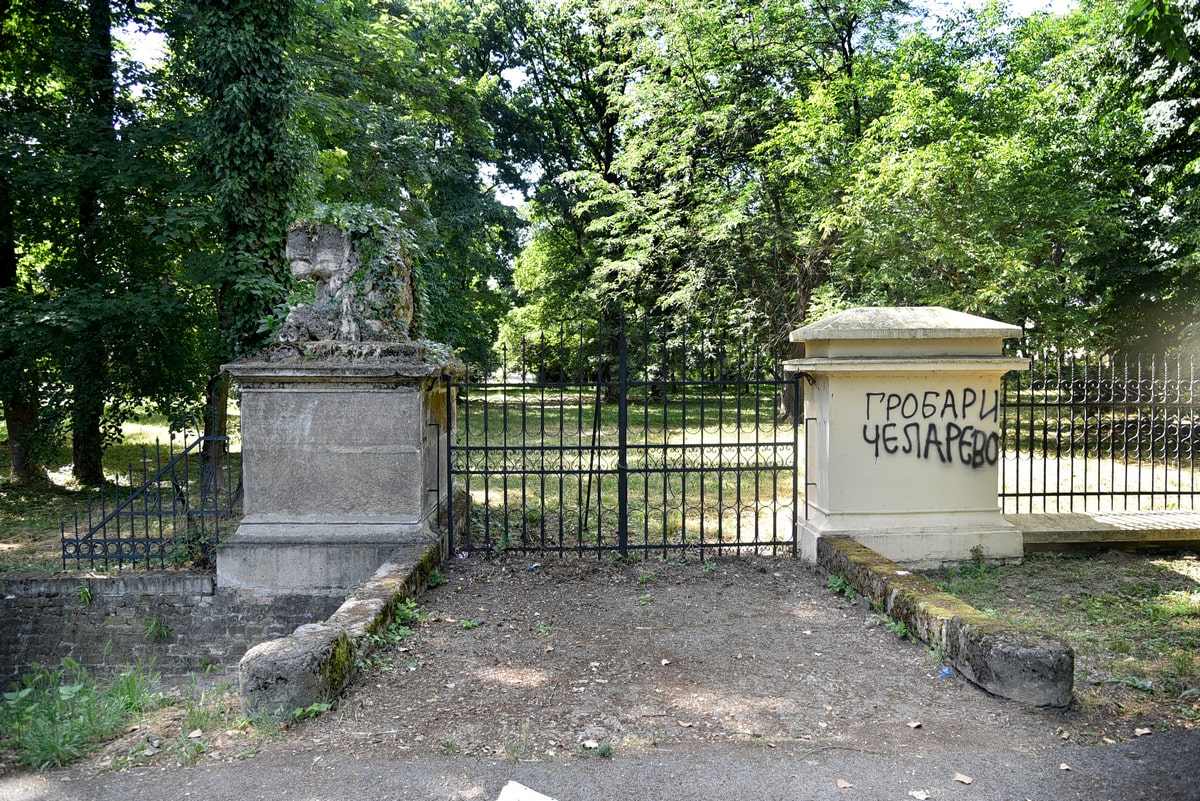
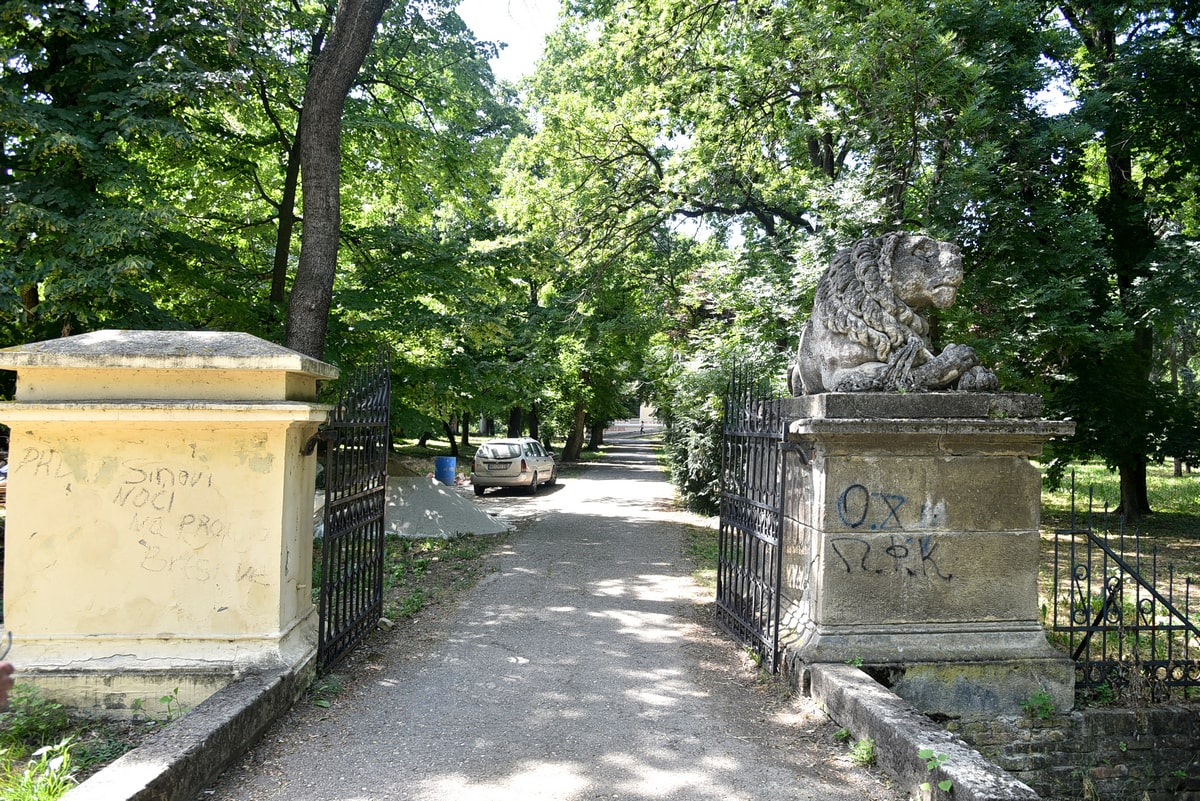
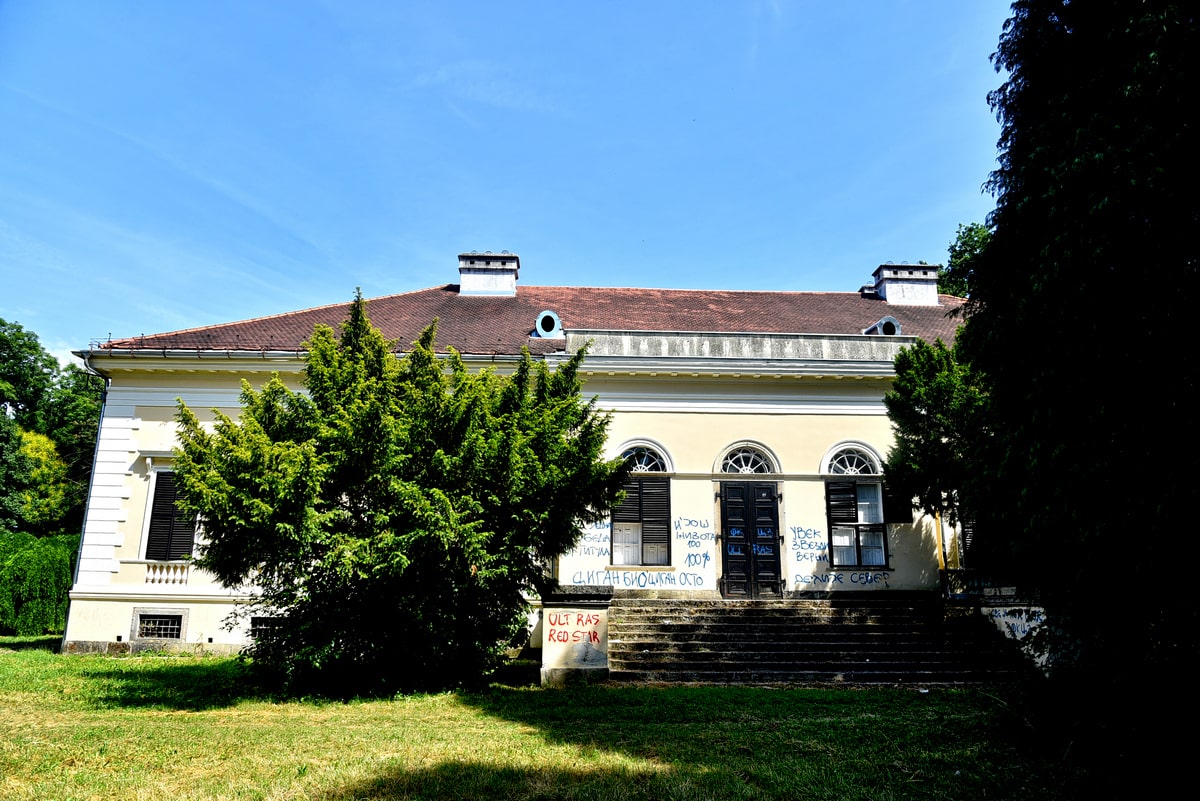
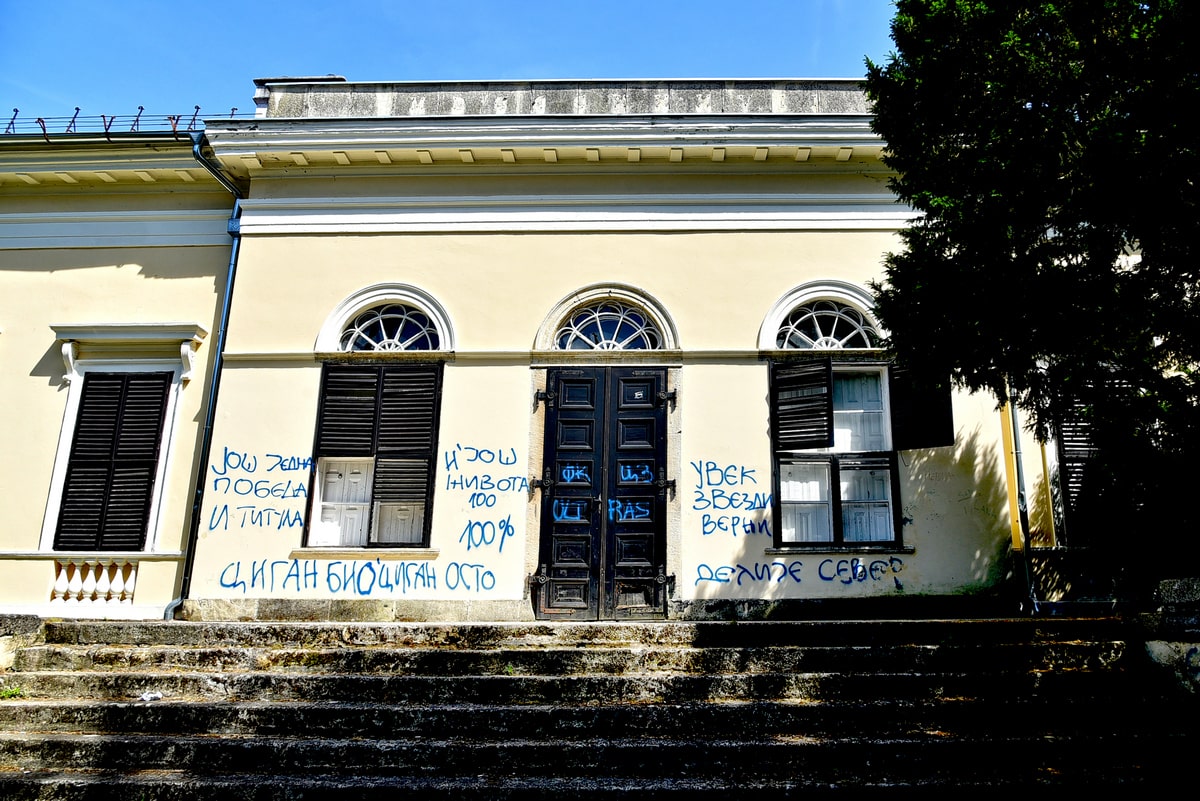
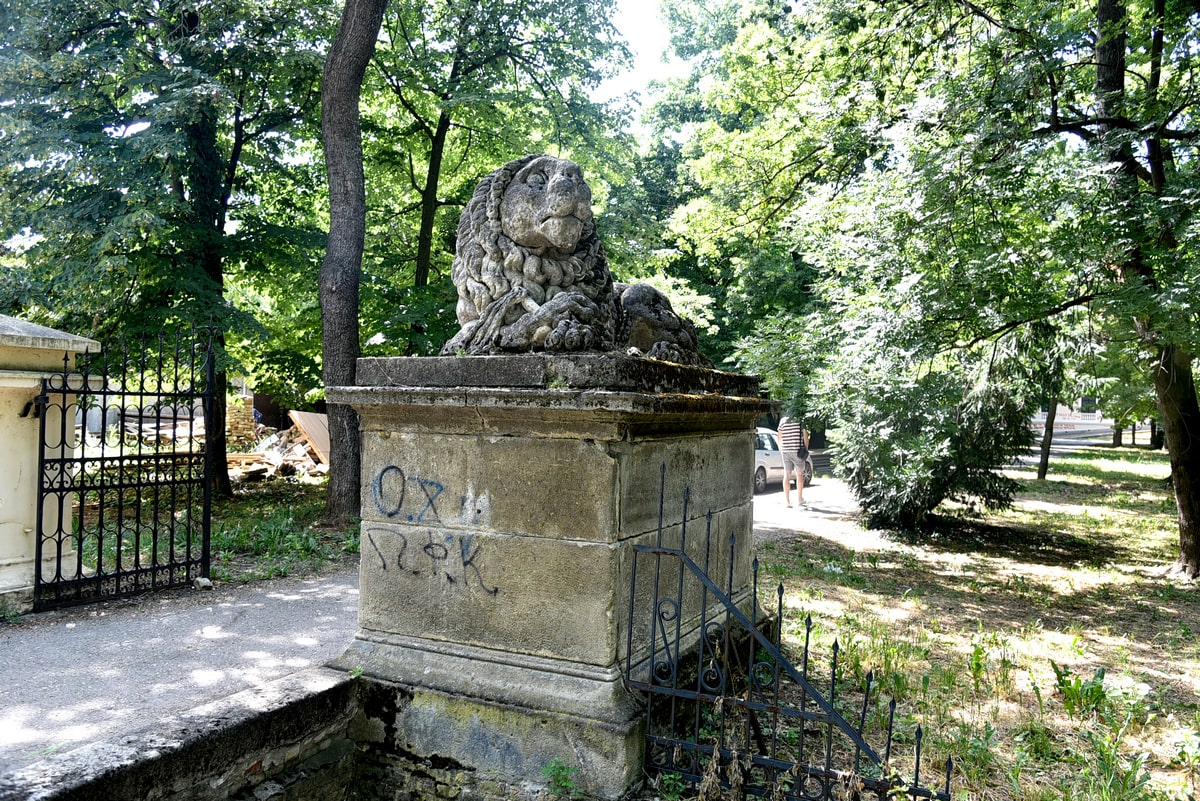
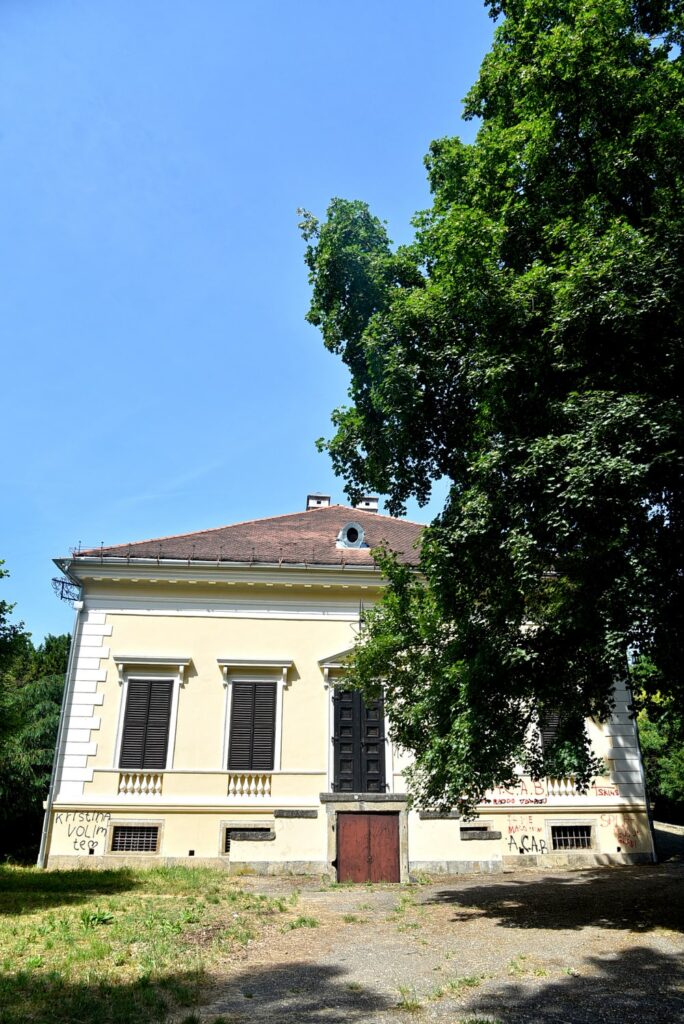
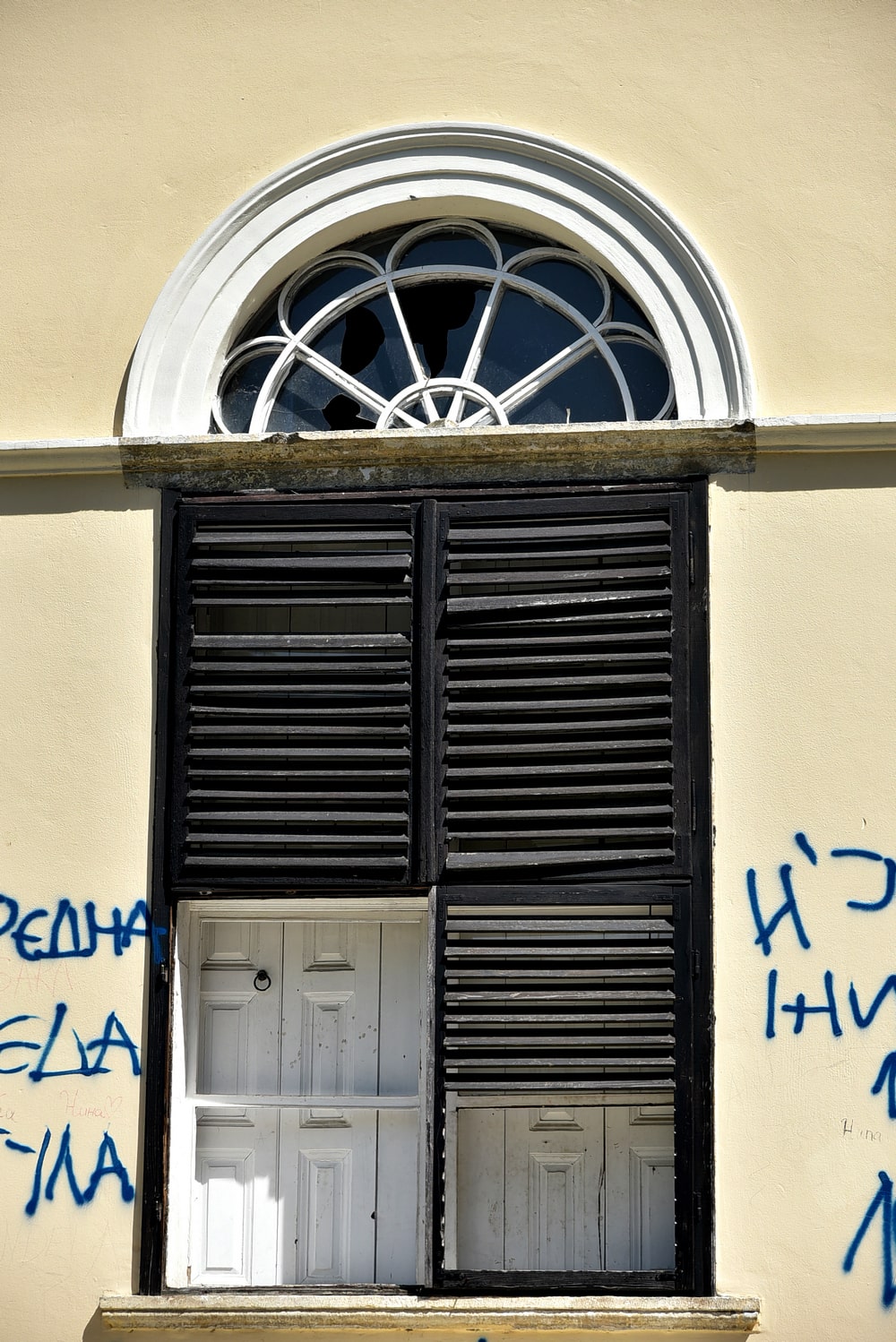
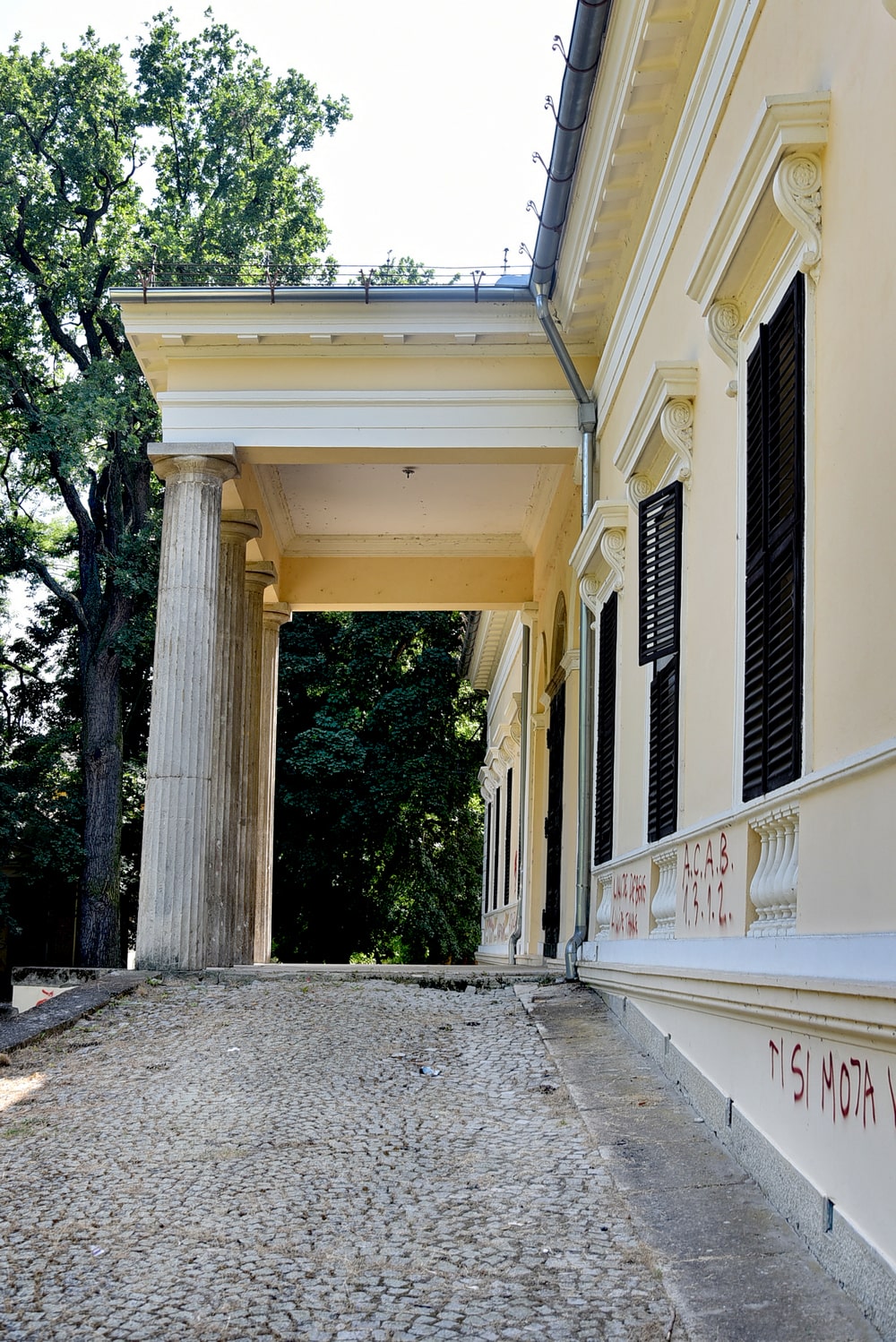
Today, both the park and the castle are under state protection but are in poor condition. Conservation and restoration works were first performed between 1985 and 1988. In the period 2002-2004. year, works were performed on recovering the roof and static repair of dilapidated ceiling structures. The park was renovated by the company Carlsberg Serbia in 2006, and the facade was also refurbished. Special attention is paid to the professionally performed restoration of the forged parts of the fence, which were done in the traditional way, and the missing parts were carefully restored to their authentic, original condition. The conservation and restoration of the double swing entrance gates, especially that removed more than 20 years ago, during the asphalting of the access paths, required the most effort. Unfortunately, it is blemished by graffiti today, and hooligans broke some of the shutters. The fence around the castle with monumental concrete lions is still in poor condition, although its restoration has been announced. The proposed purpose of the castle would be a hotel and restaurant with a garden, which could be used for exclusive events and be self-sustaining on a daily basis, since it is in the centre of the village.
Milan Belegišanin also has a legend about this castle, which he described in “Dreams of Grassy Towers”: “Nikola Bezeredj was the builder of the castle in Čelarevo and its first owner. When Lazar Dunđerski bought the castle from him in 1882, Nikola bestowed on the new owner a piano, which he himself got a long time ago for very little money from a deposed Russian count who gambled everything away.The piano was placed in the salon waiting for better days, and Lazar Dunđerski got into work. In 1882, he built a steam mill and a denatured alcohol factory in the settlement. In 1884, he managed to clear half of the park, and to build a brewery on the right side, not far from the castle, and plant hop gardens. One afternoon, while walking through the lounge, he accidentally stopped in front of the piano and began to think that the castle should be ensoulled. He himself was not skilled in art, which does not mean that he did not love it. The neglected the piano keys, which had already forgotten the touch of the gambler’s thin fingers, forced him to open the doors of his castle to the most famous artists of Serbia from the end of the 19th and the beginning of the 20th century. From that moment, the guests of the castle were Laza Kostić, Paja Jovanović … There were painters, poets, sculptors, but the piano was silent. For a while, one of the guests would casually cross the keys and that was it. The most frequent guest was Laza Kostić.
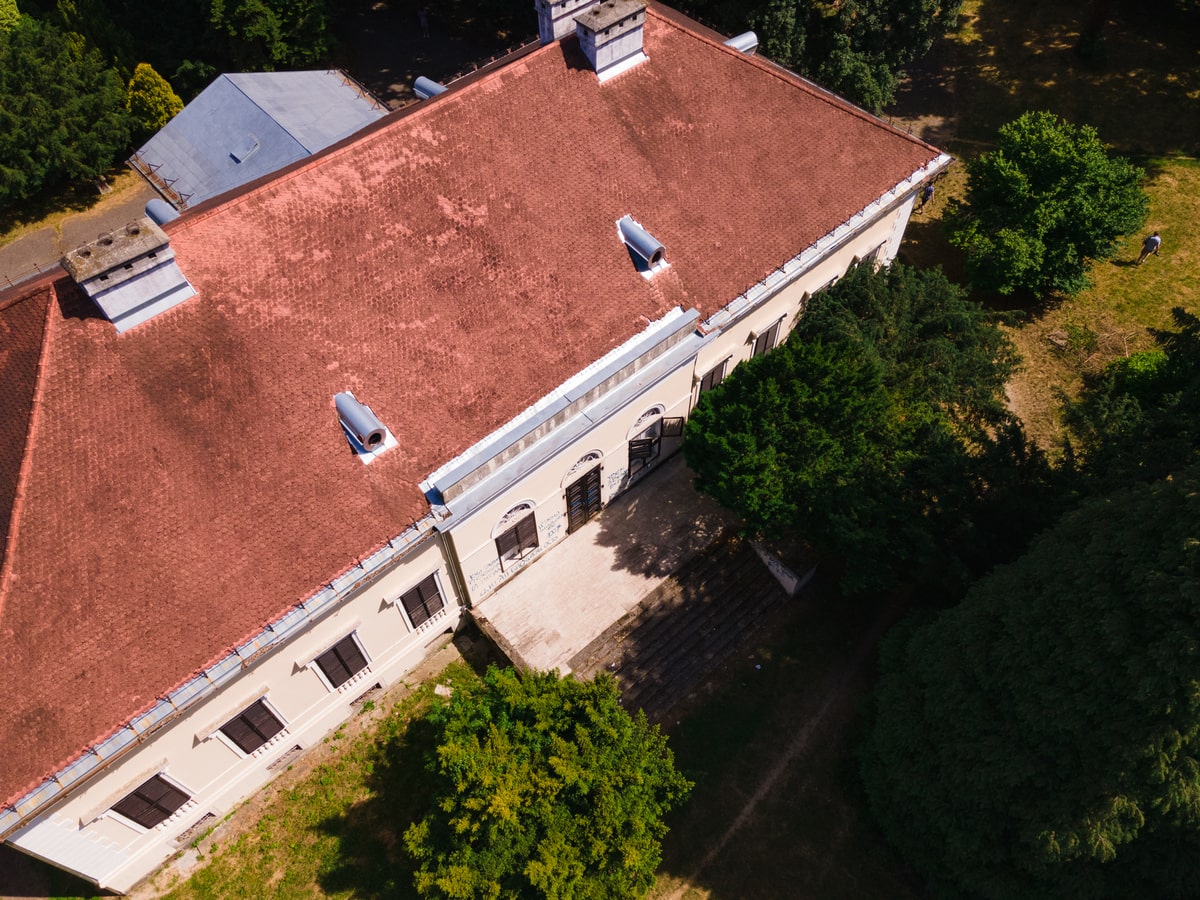
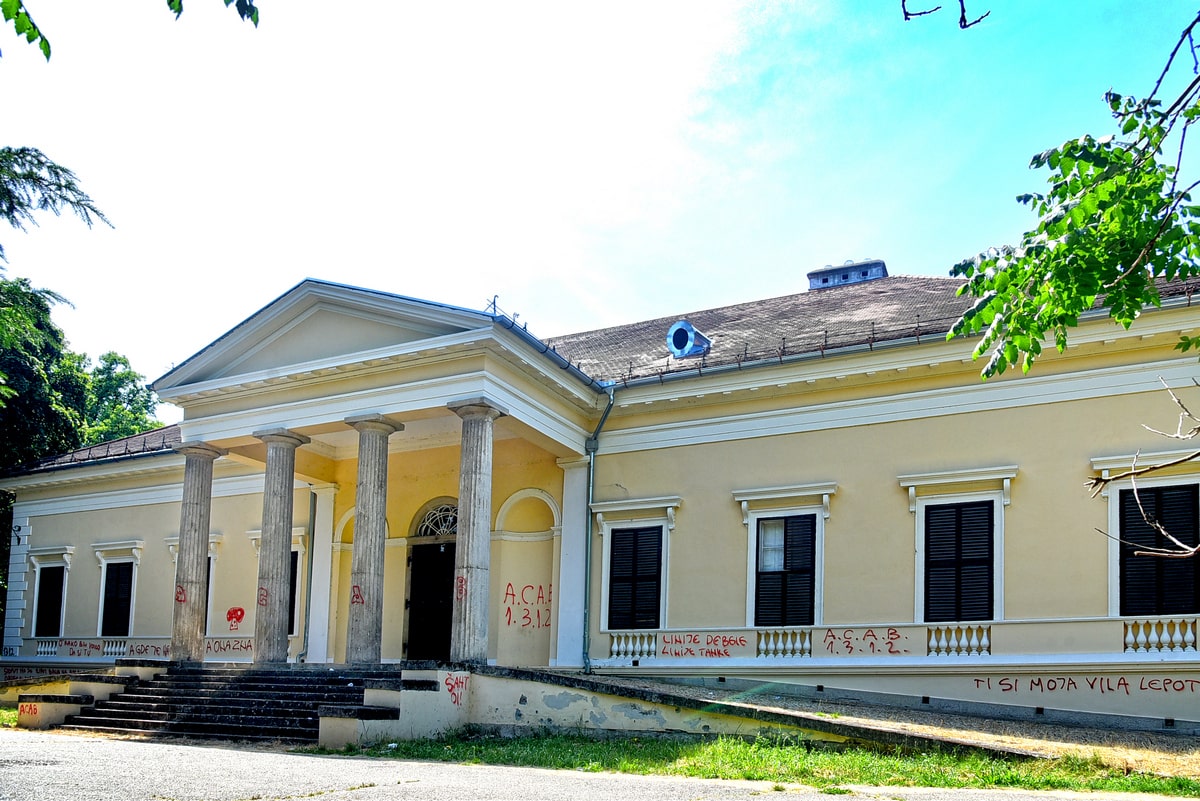
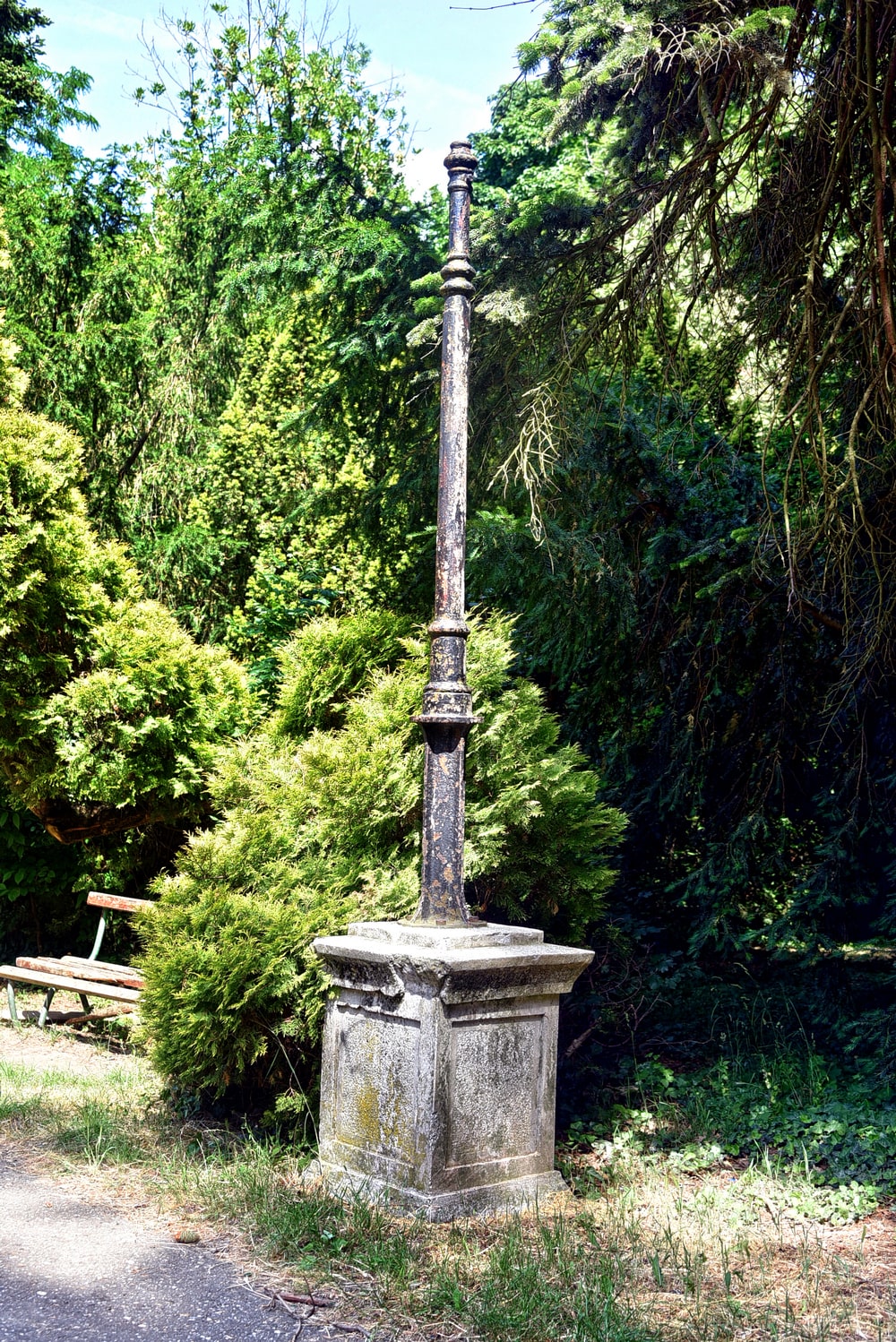
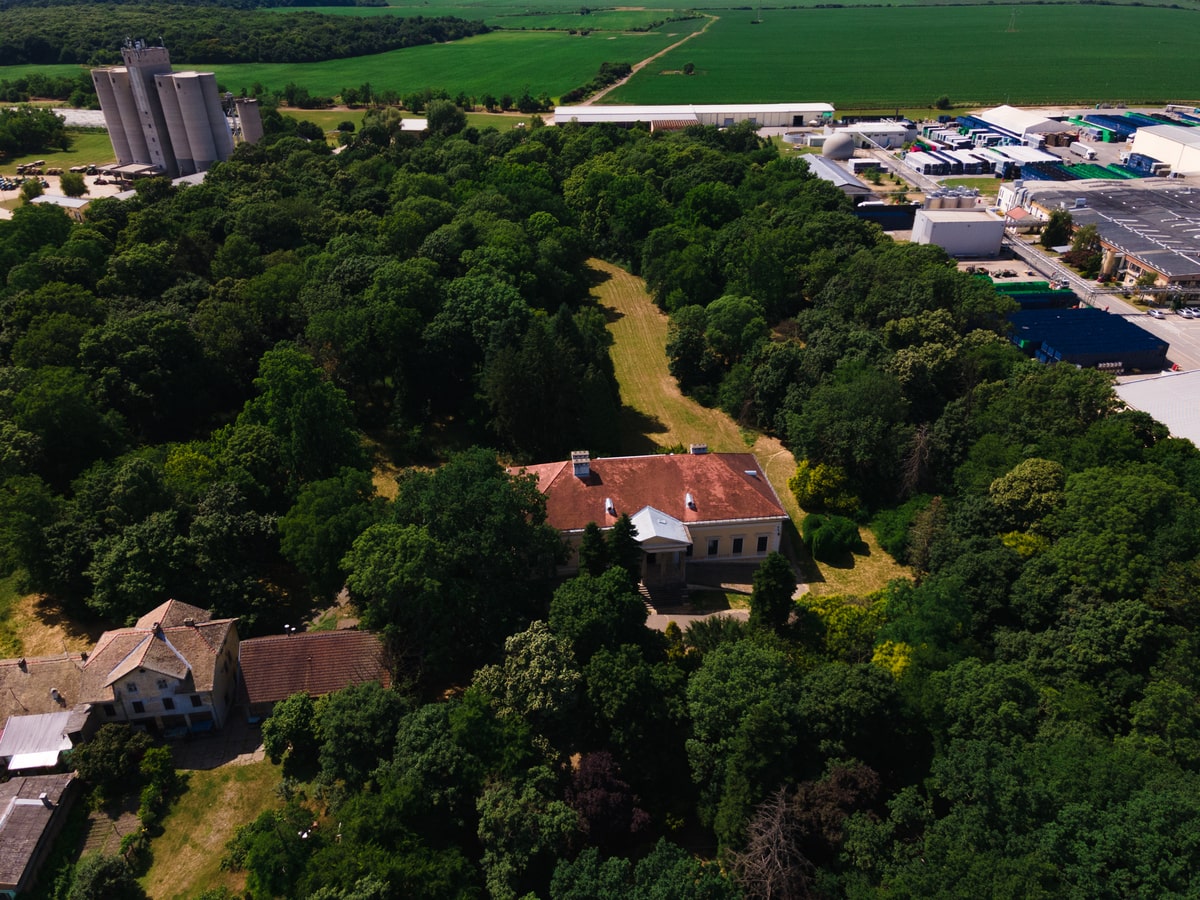
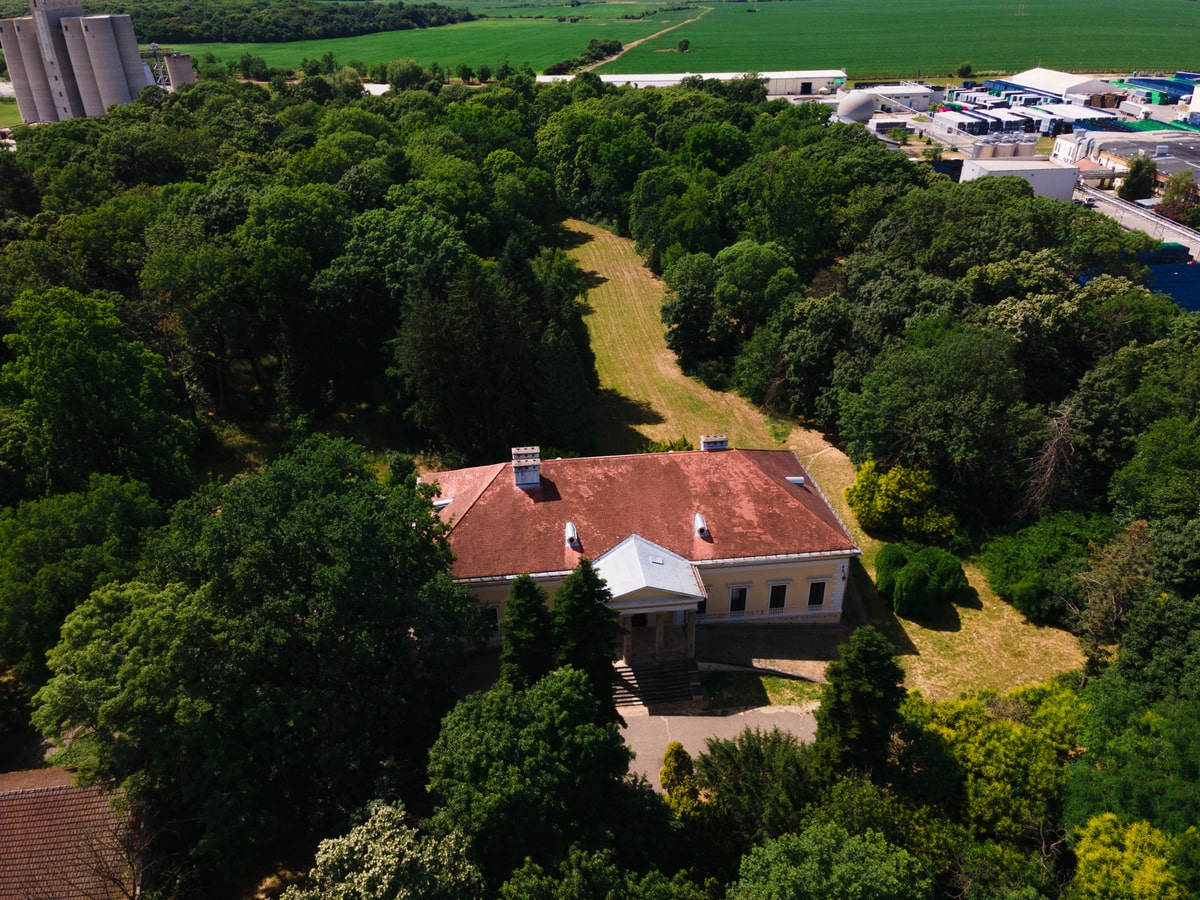
The friendship between the great poet and the owner of the castle became so great that Kostić was the godfather of all the children of Laza Dunđerski. One of those children was Lenka Dunđerski, whom the poet fell in love with in his later years. It is interesting that Lenka was the first to start playing the piano intensively. It happened that the servants took out, when the weather was nice, the piano outside and placed it between two stone lions at the entrance to the castle. Lenka would sit down and start playing. It would be a welcome to the poet. Sounds would come out of the gifted piano’s keys, which would first tame the stone lions, and then hit the soul of the elderly poet to the point of pain and helplessness. Lenka did not have a special technique, but her chastity and the fate of the long-dead gambler, the former owner of the piano, created a harmony that exuded the sweet sadness of dying. The elderly poet did not feel worthy of this youth, although Lenka also felt sympathy for him. In the long nights, he dreamt of stone lions, which turned into solid thighs of a dancer and danced to the music of Lenka and the piano. Laza Kostić started punishing himself with insomnia. Aged, exhausted and aware of evanescence, he goes to the Krušedol monastery, where in daze, in solitude, delirium and longing, from his worn-out body, as from dry dogwood, he squeezes, seemingly, the last drops of life musk.
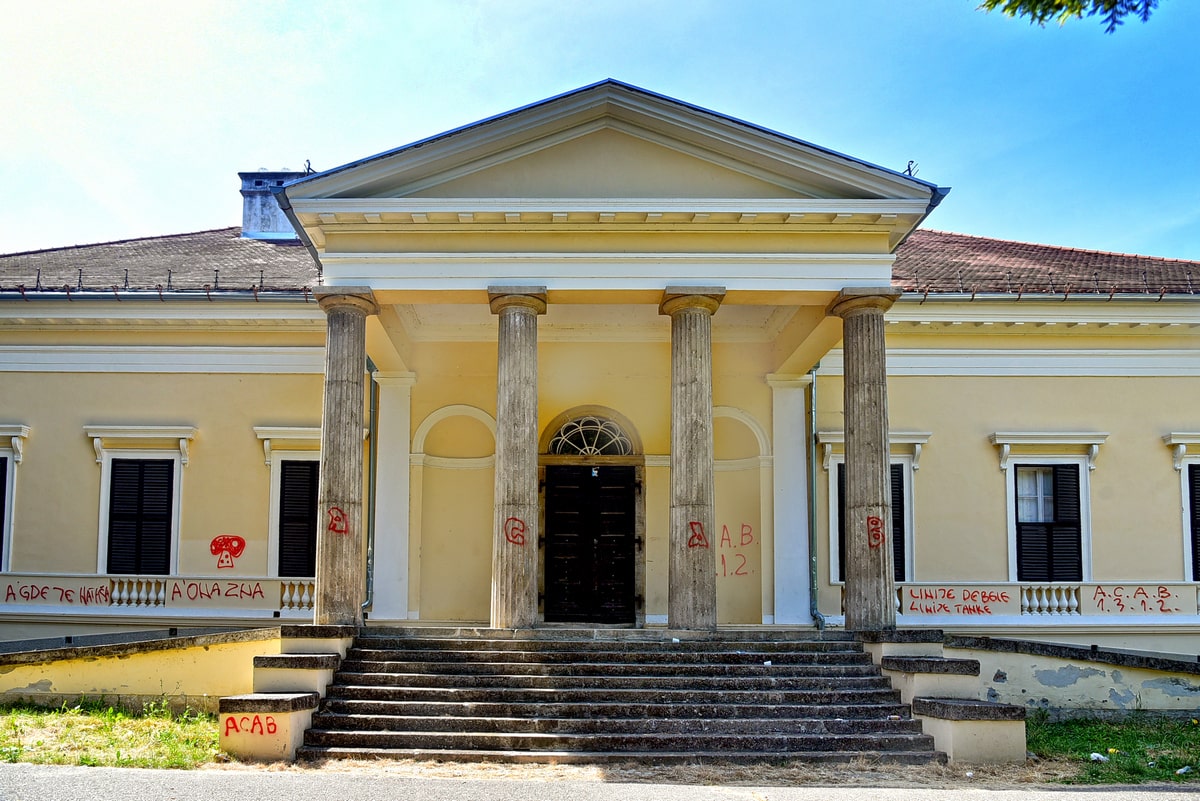
Soon after, in 1895, Lenka Dunđerski died in Vienna. Laza Kostić was not with Lenka during his life, so he imagines that they will be together after her death. He didn’t have Lenka’s body, but he would have her shadow. They did not share life together, but they may share death. The connection to Laza becomes haunted and over the dreams of creative madness of an unfulfilled love, the most beautiful song of Serbian lyrics “Santa Maria della Salute” emerges. Even today, sometimes, chords of a gambled piano are heard from the castle chamber, and lions roar acknowledging that they are part of the poet’s dream. A haunted harmony is created, and then the other haunted poets Yesenin, Edgar Allan Poe step under the stars of Čelarevo, and Lenka Dunđerski, Anabel Lee and Isidora Duncan walk through the castle park arm in arm in white worn wedding gowns… ”
The castle is not open to visitors, but the entrance to the park is free.
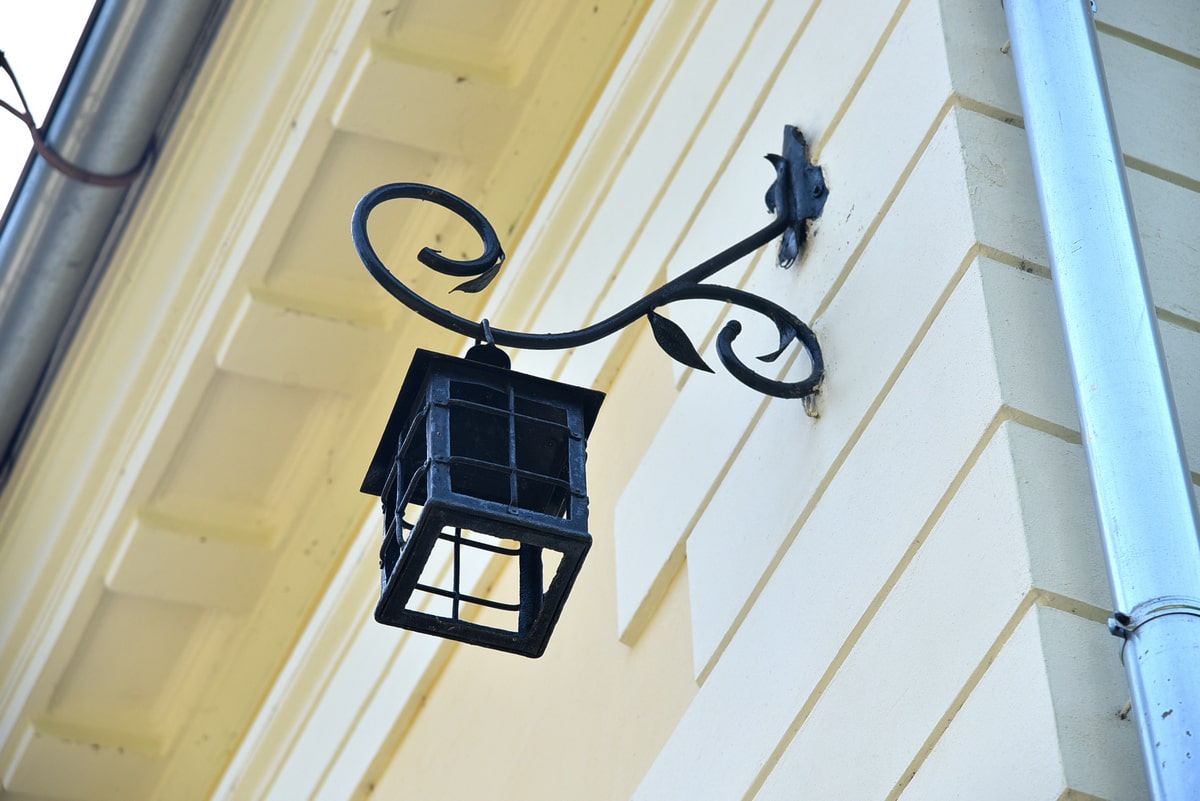
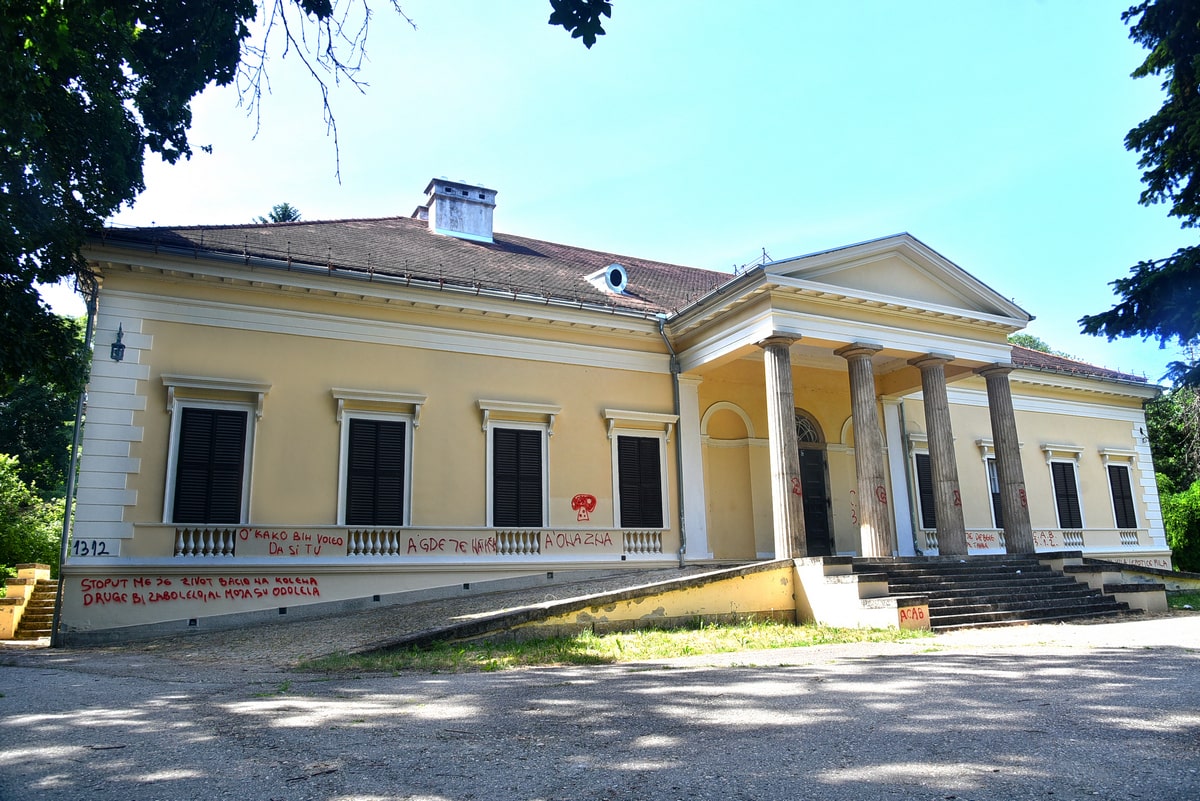
This project was supported by the Ministry of Culture and Information of the Republic of Serbia.





